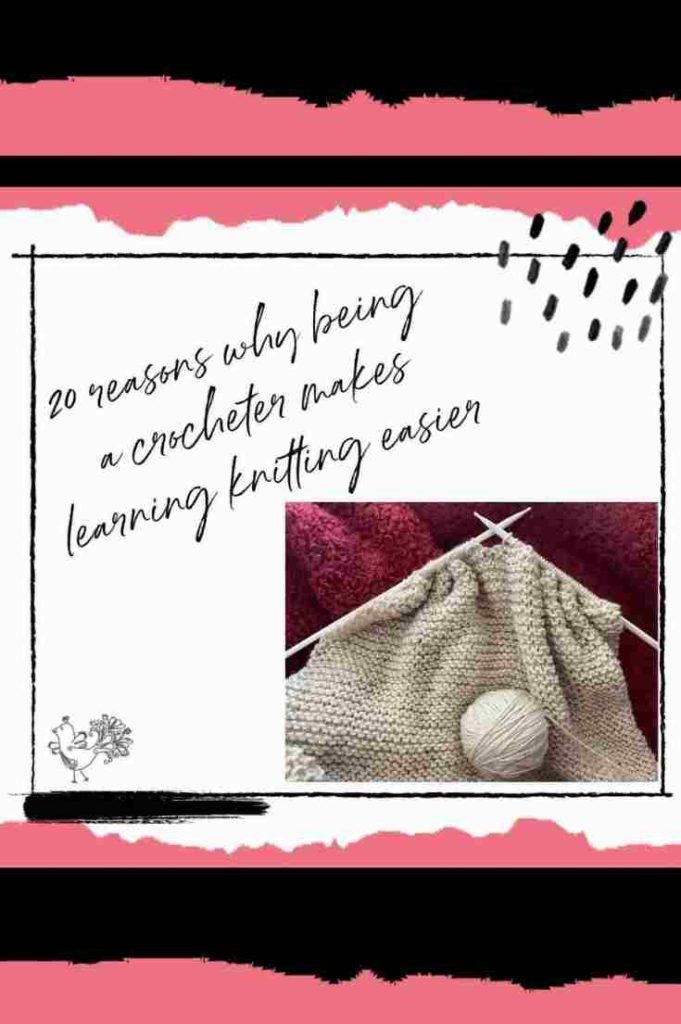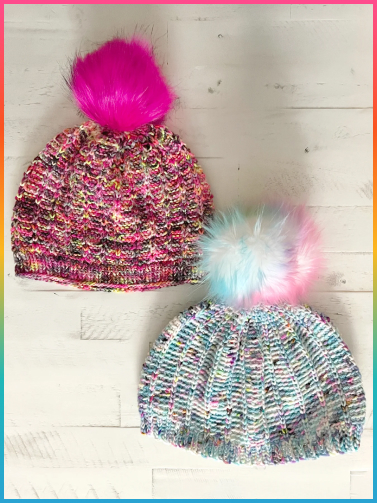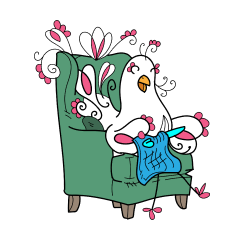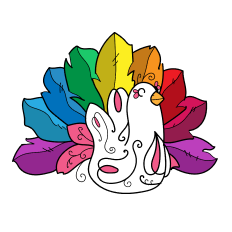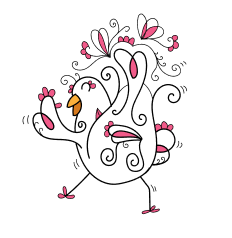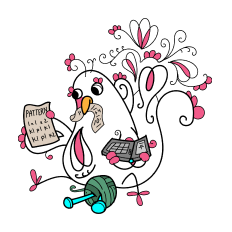20 Reasons Why Being a Crocheter Makes Learning Knitting Easier
For several months this year, we ran weekly BiCrafty Bootcamp: Knitting Lessons for Crocheters. Although anyone can learn to knit from these lessons, our premise was that being a crochet makes learning knitting easier. Therefore, we included “Crocheter’s Edge” tips in each lesson. In other words, we shared exactly what you already know in crochet that can make it easier to grasp the ins and outs of knitting. We thought we’d round up all of those tips today, to give you a complete sense of how crochet skills make learning knitting easier.
How to Start
Crocheters already know the slip knot. Just like in crochet, that’s the first thing that you’ll learn in knitting. Having the self-confidence of already knowing this first part will make learning knitting easier. After all, you’re starting out on the right foot.
The Importance of Gauge
Most crocheters already understand what gauge is. Likely you already know how to figure it out. Moreover, you understand why it’s important, particularly for wearable projects.
Tension
Additionally, crocheters understand that tension affects your work. Furthermore, you know that tension affects gauge. You might not be able to easily control your tension at first. After all, getting used to knitting needles can be as awkward as when you first learned to hold a crochet hook. However, comprehending that your tension is the problem, and knowing that practice will help with this, makes learning knitting easier.
You Know About Yarn
Knowledge of yarn will help in choosing yarn for knitting projects. You already know about yarn weight and fiber.
Do note, however, that yarn behaves differently on needles than on hooks. Therefore, just because something works for you in crochet doesn’t always means it’ll be the top choice for knitting. Don’t worry, you’ll figure it out! Either way, your foundational knowledge of yarn helps. Remember in crochet when a yarn label baffled you? You don’t have to worry about that now.
Some Knowledge of the Tools
Although knitting needles are different from crochet hooks, you might have some familiarity with the feel of the tools in your hand. You also know about stitch markers, tapestry needles, etc.
Likewise, you have working knowledge of different tool sizes. You understand that a size D crochet hook and a size J crochet hook serve different purposes. Therefore, you’ll easily grasp different needle sizes as well.
Finally, you’ll have some sense of how to hold your knitting needles. Many people hold their dominant-hand needle exactly like they do their crochet hook.
Learn more about knitting needles and yarn for beginners.
Counting Stitches
You know how to count stitches. It’s really easy to count your stitches in knitting. Easier than in crochet. Nevertheless, it is very crucial to do so. You know all about this as a crocheter. Therefore, it makes learning knitting easier.
How to Read a Knitting Pattern
You have some familiarity with the language. Remember when you first looked at a crochet pattern and it was all gibberish to you? While you might not be familiar with knitting abbreviations, yet, you do have a basic working knowledge of how a pattern reads. You know that you’ll be able to get this.
Creating Fabric From a Single Stitch
As a crocheter, you already know that you’re creating fabric as you work. As you first begin to knit, you’ll use the same stitch over and over again to create your fabric. For example, you’ll use knit stitch only or purl stitch only to create a piece of garter stitch fabric.
Combining Stitches To Create Different Fabric
Likewise, as you add to your stitch knowledge, you’ll be able to combine knit stitches to create different fabric. You know the difference in feel and drape between a single crochet square and one that uses both single and double crochet stitches, right? Likewise, when you combine knit and purl stitches to create stockinette stitch, that’s a new fabric. Your basic understanding of stitch combinations in crochet makes learning knitting easier.
Working Similar Stitches in Different Ways
As a crocheter, you’ve got an edge up on the knit and purl stitch (which are the main two stitches in knitting) because you’re already used to working a similar stitch in slightly different ways. For example, if you know how to front post crochet and back post crochet then you know how to work the exact same hand movement in a slightly different manner. This is the same idea. Knowing how to manipulate your crochet hook to create the same stitch in an opposite ways makes learning knitting easier.
You Know How to Change Colors in Yarn
You know how to add a new yarn in crochet, including for striping. Therefore, you also know how to change colors in knitting. There’s a slight difference about when you do it. (That’s because in crochet you do it the loop before you want the color change and in knitting you do it the loop of.) But the gist of it is the same, making learning knitting easier as a crocheter than as a brand new newbie.
Weaving in Ends
There are different ways to weave in ends in both knitting and crochet. Therefore, you might find that the method you crochet is or isn’t conducive to knitting. Either way, your knowledge of the concept makes figuring out in knitting easier than if you’d never woven in ends before.
Learning Ribbing in Knitting is Easier if You Know it in Crochet
When we got to the first lesson on knitting ribbing, we had these crocheter’s edge thoughts for you:
- You probably already understand how ribbing affects the fabric that you’re creating. You get more stretch than if you simply work in the same stitch across a whole row over and over again.
- In crochet, you’ve probably alternated stitches within a row. Therefore, you can easily comprehend how to make different knit stitches within the same row.
- Have you ever alternated a front loop and back loop stitch across a row? Or front post / back post stitches (for example, to make basketweave crochet patterns)? Then you get the concept of working one stitch, then working what’s essentially its opposite stitch, and alternating across the row. Since knits and purls are basically opposites of each other, it’s a similar concept.
This reiterates some of the above. For example, you understand how to work the same stitch in opposite directions, more or less. Truly, what you know in crochet will continue to make learning knitting easier at every stage of the process.
Moving from Rows to Rounds
As a crocheter, you already know how to join your work to work in the round. Moreover, you understand what working in the round entails. While there are slight differences, that knowledge will help as you learn to knit in the round. For example, you already know how to watch carefully when you join to make sure that you’re not twisting your work.
Increasing and Decreasing
As we began to make our first knit hat, it was time to start talking about shaping. Therefore, we learned decreasing. As a crocheter, you comprehend that increasing means adding stitches in a round or row. Likewise, decreasing means reducing stitches in a round or row. Moreover, you have a sense of how to do that and why we do it. This makes learning knitting easier.
When we learned to knit triangle lace, we also covered how and why you might increase and decrease in the same row/round. As a crocheter, you already know it’s to create a pattern without changing your stitch count.
Some Stitches Will Seem Really Familiar
There are some stitches in crochet that aren’t all that different in knitting. For example, seed stitch shows up in both crafts. Moss stitch, granite stitch, and checkerboard stitch are similar. While they aren’t identical, it’s helpful to have a sense of what the fabric should look like as you knit.
Pattern Repeats
As you advance in knitting, you’ll obviously work with more complicated patterns. Therefore, you’ll come across pattern repeats. In other words, you’ll work maybe five rows of a pattern then repeat those same five rows again. Likely, this concept is familiar to you from crochet.
Both Crafts Have Benefits
Both knitting and crochet have benefits. They can provide occupational therapy, mindfulness practice, build self-esteem, reduce depression and so much more. If you find those experiences in crochet, then chances are that you’ll find them in knitting as well.
Things To Remember As You Keep Knitting
By the end of BiCrafty Bootcamp, we were all knitters. Therefore, we didn’t need the crocheter’s edge tips anymore. But the Marly Bird team wanted to leave you with these thoughts:
- There’s always more to learn in either craft.
- However, you can choose very simple projects with basic stitches any time that you want.
- Crochet and knitting both have healing properties. Work them into your daily self-care routine.
- When you lose your crojo, try a knitting project. And vice versa.
- Crochet and knitting are both tough on the hands and the posture. Therefore, make sure to take breaks and do exercises.
Learn how to knit with Marly Bird on YouTube.

